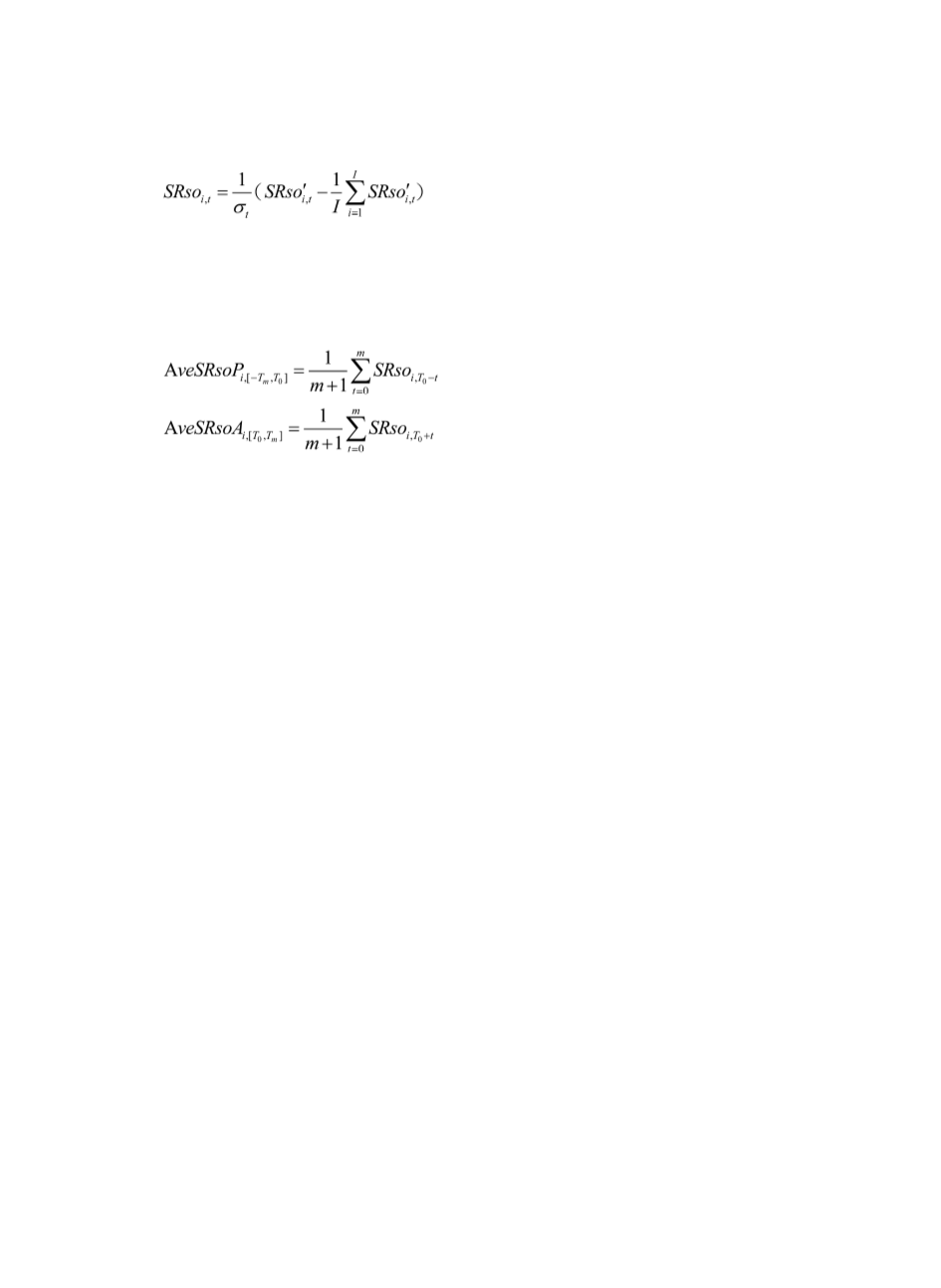

媒體聲譽對企業社會責任得獎企業其股市表現與財務績效之影響
104
(11)
We then use Equations (12) and (13) to calculate the average sentiment ratio for
different periods, prior to and after the CSR award announcement dates:
(12)
(13)
where
SRso’
i,t
is the average score based upon the use of the semantic orientation
method for the
i
th
firm on day
t
;
N
is the number of news items on the
i
th
firm on day
t
; the
estimated
SRso
i,t
in equation (11) to (13) is the standardized sentiment ratio for the
i
th
firm
on day
t
;
I
refers to the total number of firm in the stock market on day
t
.
σ
t
is the standard
deviation of
SRso’
i,t
for total samples in the stock market on day
t
.
AveSRsoP
is the
average standardized sentiment ratio for firm
i
from
T
m
days prior to the CSR
announcement date to the CSR announcement date (
T
0
).
AveSRsoA
is the average
standardized sentiment ratio of firm
i
during the period from the CSR announcement date
(
T
0
) to
T
m
days after the CSR announcement date. For both calculations,
m
ranges from 0
to 150 trading days.
SRso
, which is a proxy for media reputation and which indicates the degree of net
optimism, ranges from –1 to 1; a higher
SRso
indicates that the news sentiment is more
optimistic. If firms are not mentioned in any news reports on a particular day, then
SRso
is
considered to be equal to 0 (a neutral report).
3.5 Regression Analysis
It is argued in some of the prior studies that CSR activities can establish corporate
reputation, and that CSR performance can affect the CARs of a firm, since a higher
corporate reputation can lead to higher CARs (Gao et al., 2012; Kong, 2012); the rationale
for this is that investors prefer to invest in firms with good CSR practices. Conversely,
other studies present contradictory conclusions of no significant relationship between CSR
and CARs. The primary contribution of the present study is our reexamination of the
relationship between CSR and stock market performance with the incorporation of media


















